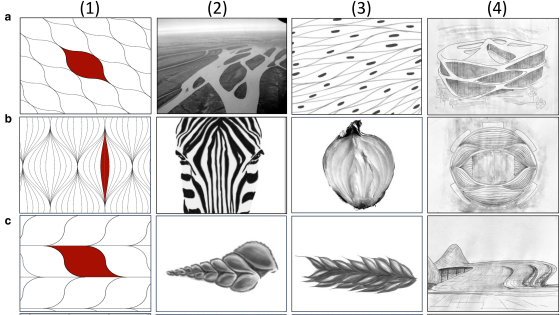Not only have we theoretically proven that a tetrahedron always has the same face down, but we have also succeeded in creating it in reality.

A New Pyramid-Like Shape Always Lands the Same Side Up | Quanta Magazine
https://www.quantamagazine.org/a-new-pyramid-like-shape-always-lands-the-same-side-up-20250625/

In 1966, American mathematicians John Conway and Richard Guy came up with the question: Is it possible for a tetrahedron made of uniform material, with evenly distributed weight, to be stable on only one side? A few years later, they proved that this tetrahedron did not exist, but the question of what about tetrahedrons with non-uniform weights might remain a mystery.
Thinking of a tumbler, you might think that if you make one of the bottom faces extremely heavy, you can create a stable tetrahedron that will always flip to the same side no matter how it is oriented. However, structures like a tumbler generally only work if they are smooth or spherical, so it is difficult to make a tetrahedron with sharp corners and flat faces always flip to the same side.
This question has been left unanswered for decades, but in the 2020s, Gabor Domokos , a professor of shape modeling at the Budapest University of Technology and Economics in Hungary, focused on the problem. Domokos has been studying the balance of objects for many years, and in 2006 he proved the existence of a rare object called a ' gombock ' that has only one stable equilibrium point and one unstable equilibrium point.
Below is an actual statue of a rubber bock. The rubber bock has only two equilibrium points, one at the bottom and one at the top, and no matter what orientation it is placed in except for the top one, it will be stable with the more stable point at the bottom.
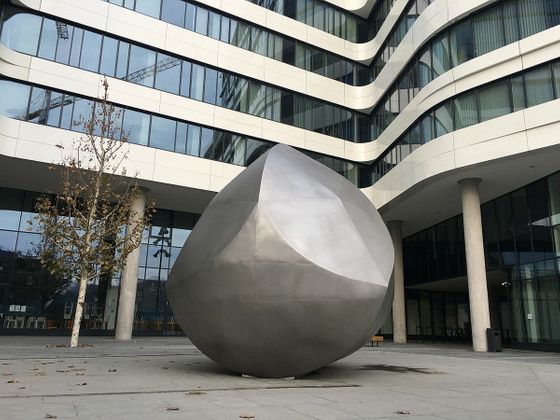
by Wikimedia Commons
Although the rubber bock has some rounded edges, Domokos was curious to see whether sharp polyhedrons would have similar properties. 'Why did we have such a simple statement about such a simple object, and not have an answer right away? I thought this was a golden question,' he says.
In 2022, Domokos asked undergraduate student György Almádi, who joined his lab, to create an algorithm to find ways to balance the tetrahedron. In 2023, he and other researchers proved that it was possible to create a tetrahedron that would be stable with a specific face down, no matter how it was oriented. This is achieved when the three connecting sides form an obtuse angle of more than 90 degrees and the center of gravity is in one of four 'load zones.'
However, the research team wanted to go beyond simply proving that this object was theoretically possible and create it as a real-world object. So they designed a tetrahedron made of a lightweight, hollow carbon fiber frame and
Below is the actual tetrahedron we made. The frame is made of ultra-thin carbon fiber, and a tungsten carbide plate is attached to part of the bottom to provide weight.
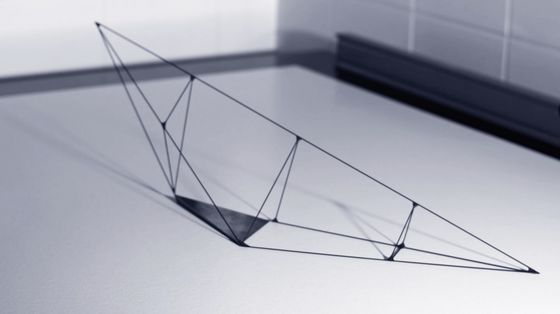
Try placing it with the other side facing down.
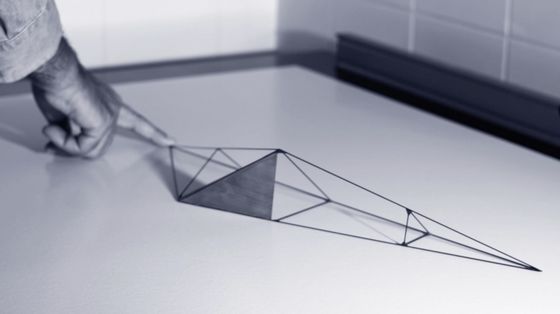
When you release your finger, the tetrahedron will rise up on its own.
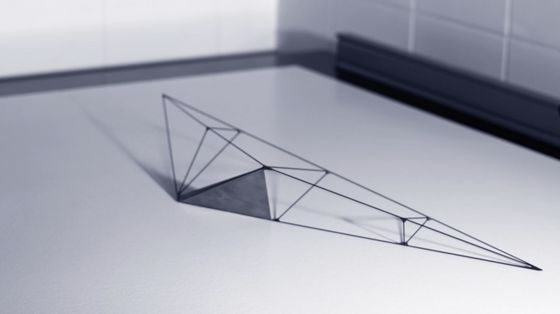
The side with tungsten carbide was the bottom and rose up.
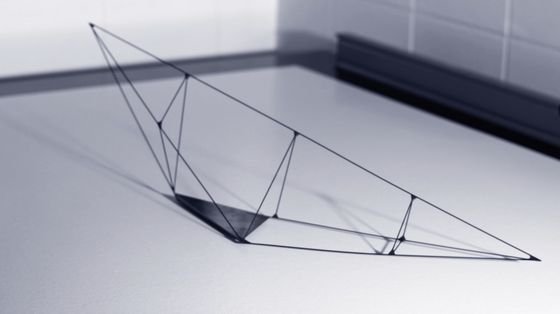
Next time try putting the other side on the bottom.
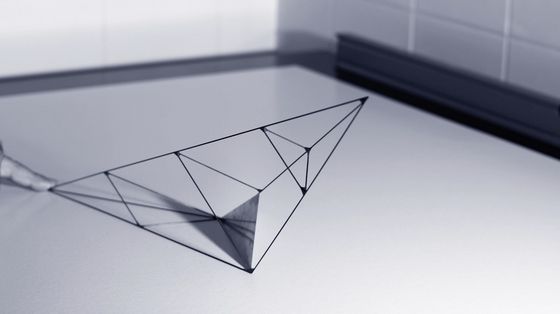
I still get up.
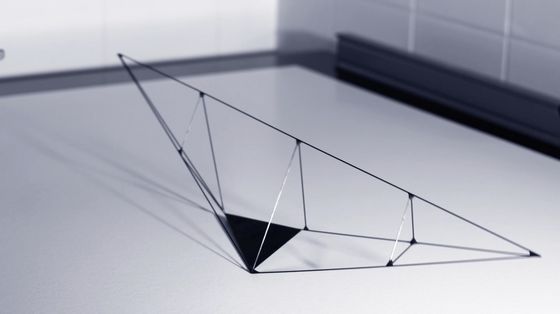
It was stable with the same side down.
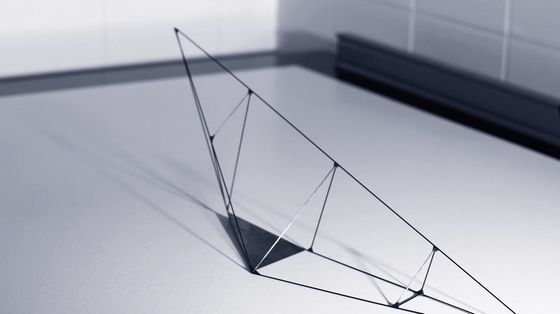
In a non-peer-reviewed paper published in June 2025, the research team reported that they had created a practical model of a tetrahedron that is stable on only one face.
[2506.19244] Building a monostable tetrahedron
https://arxiv.org/abs/2506.19244
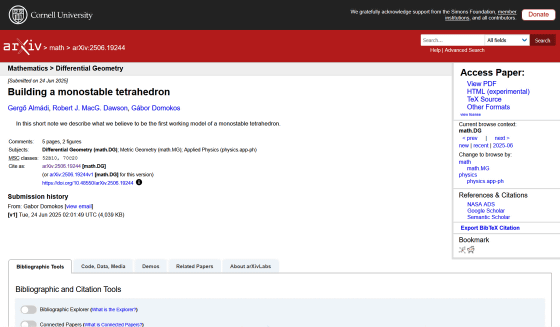
Related Posts:
in Science, Posted by log1h_ik


